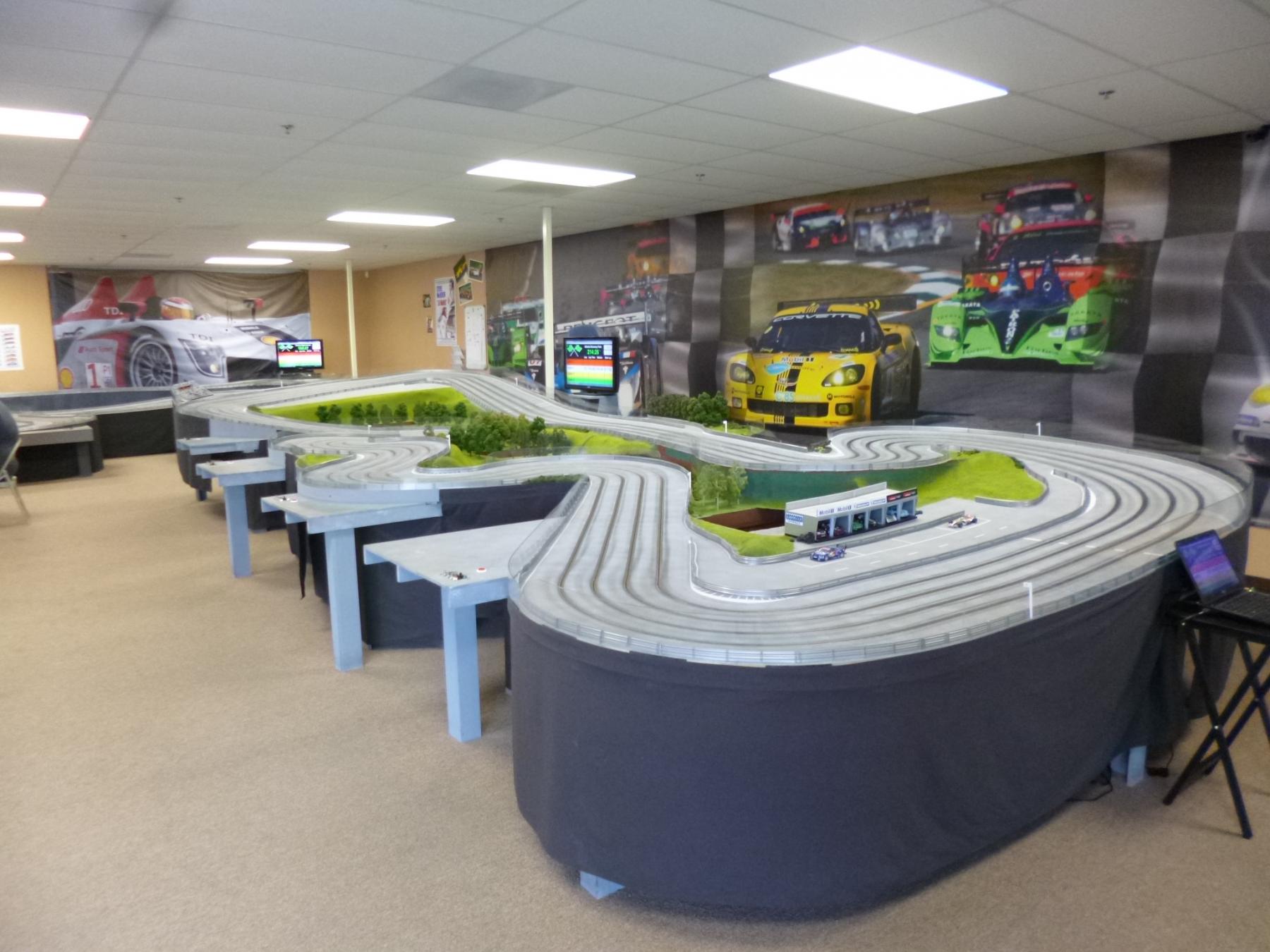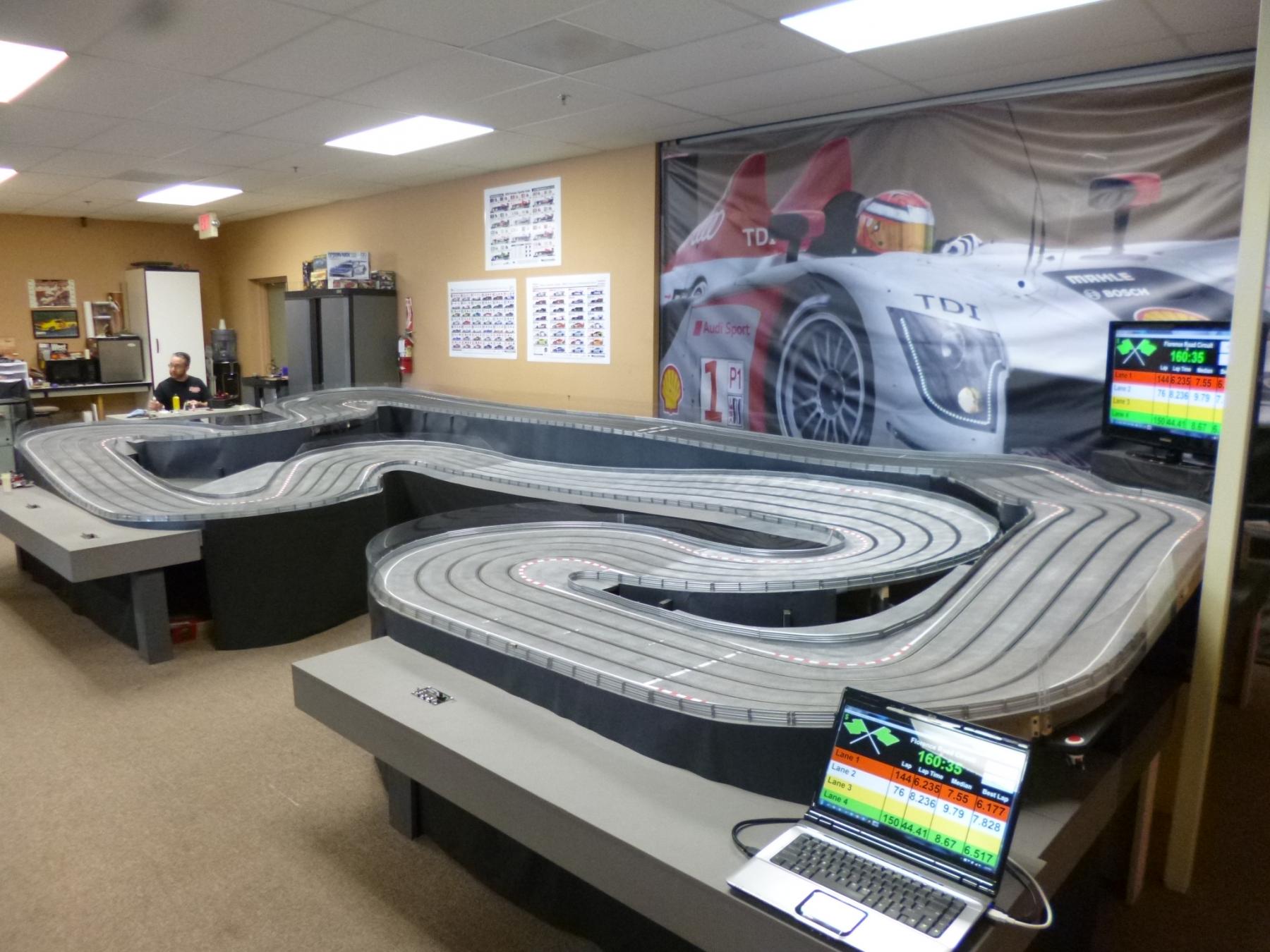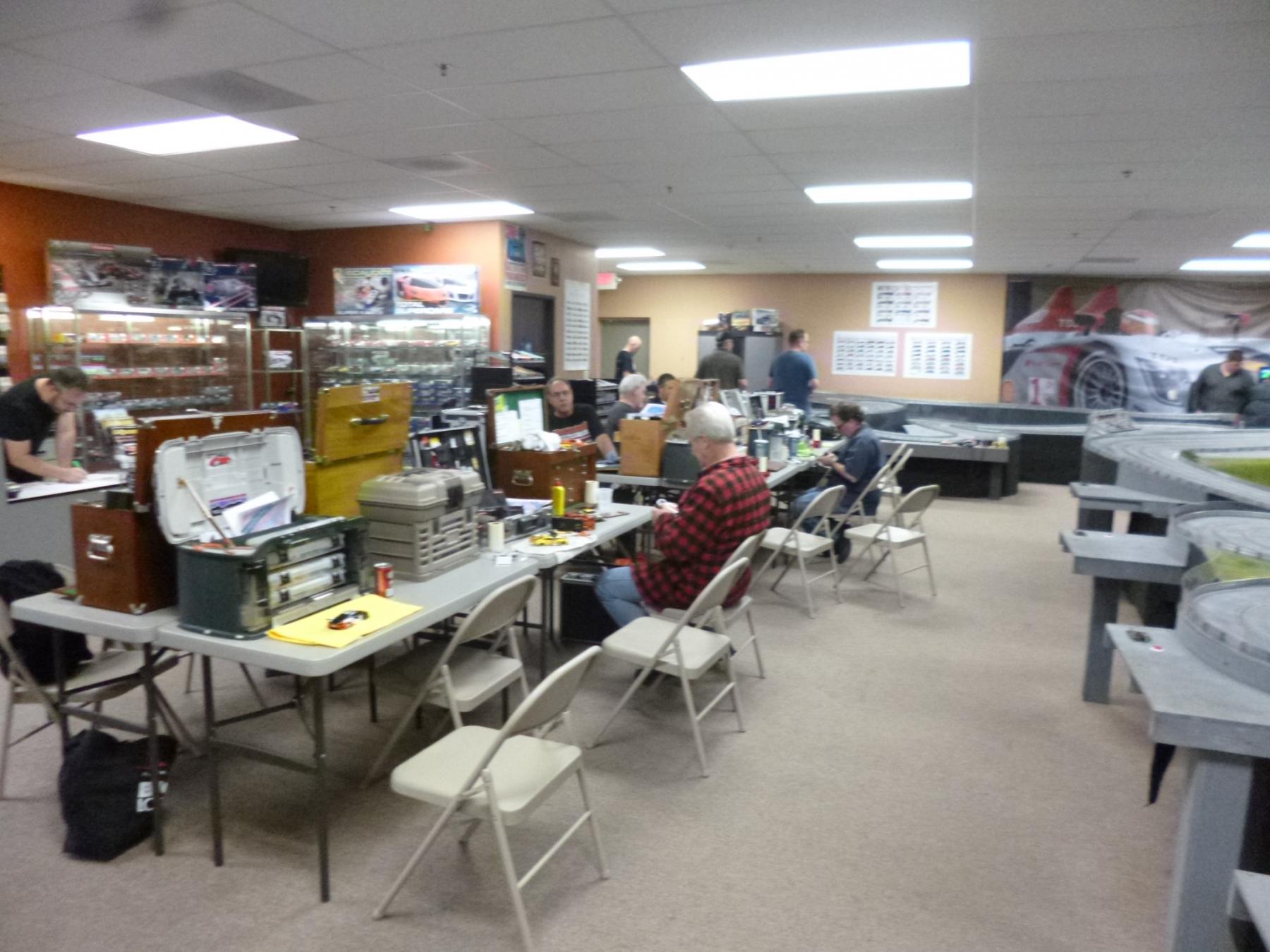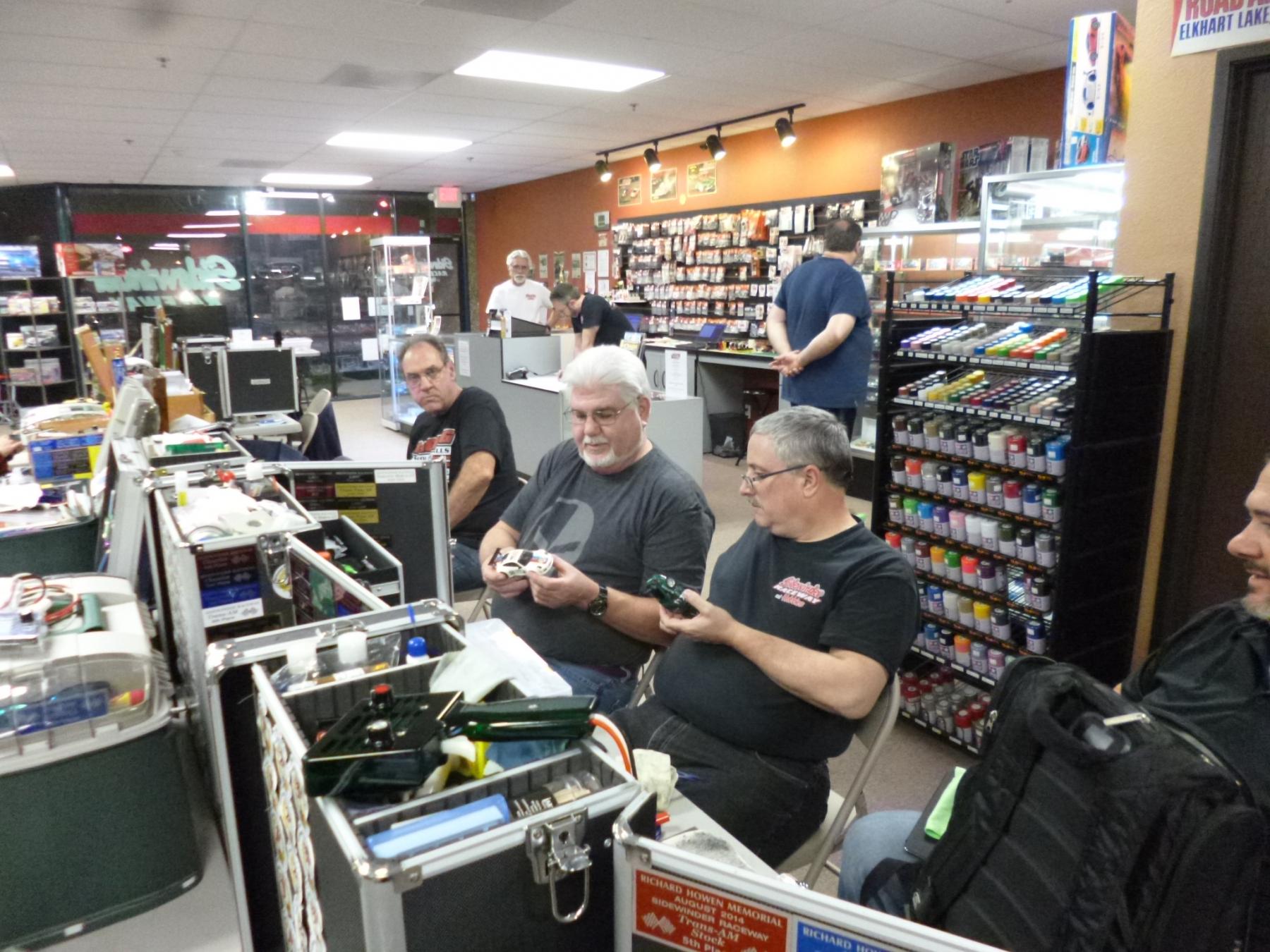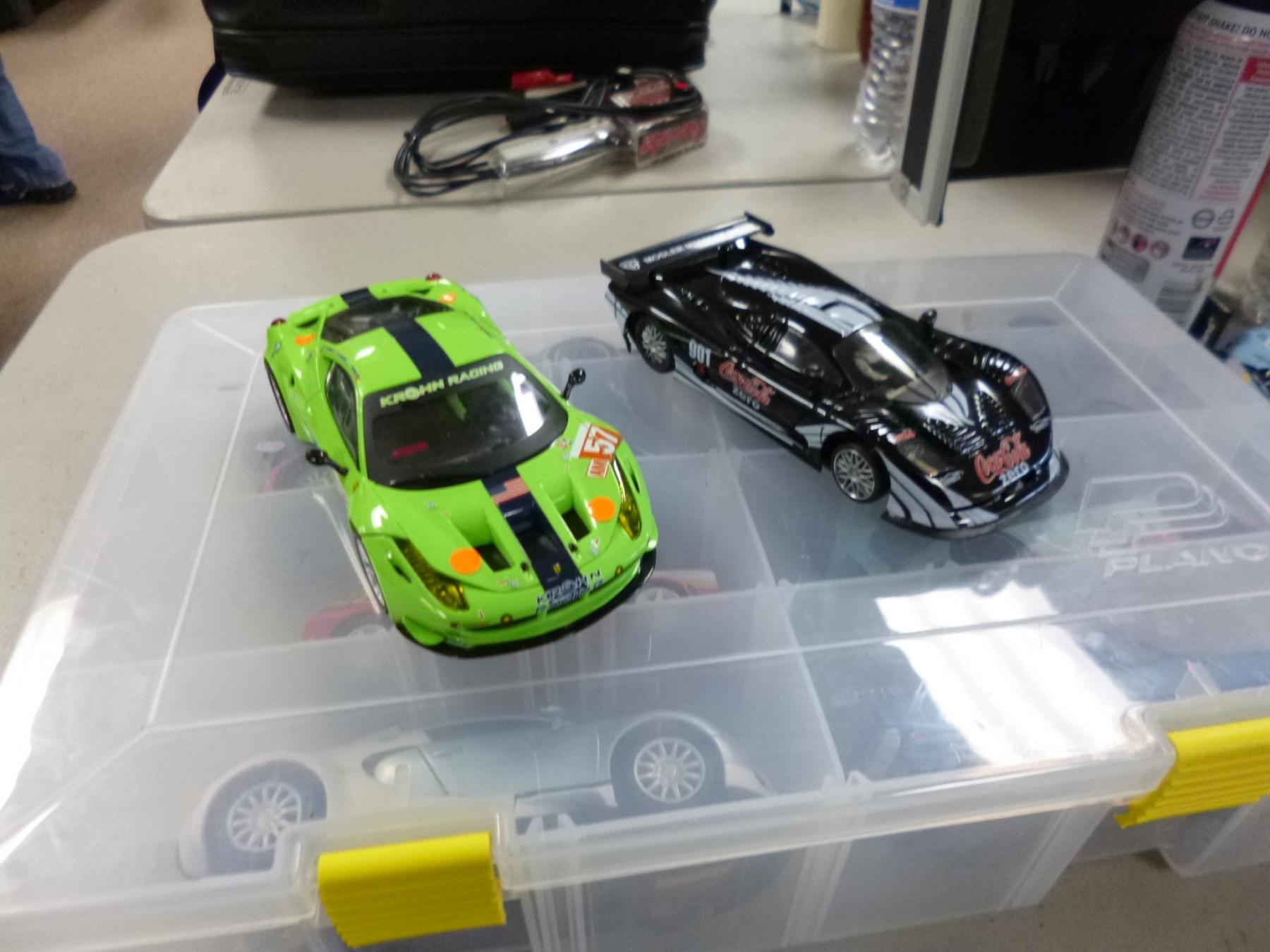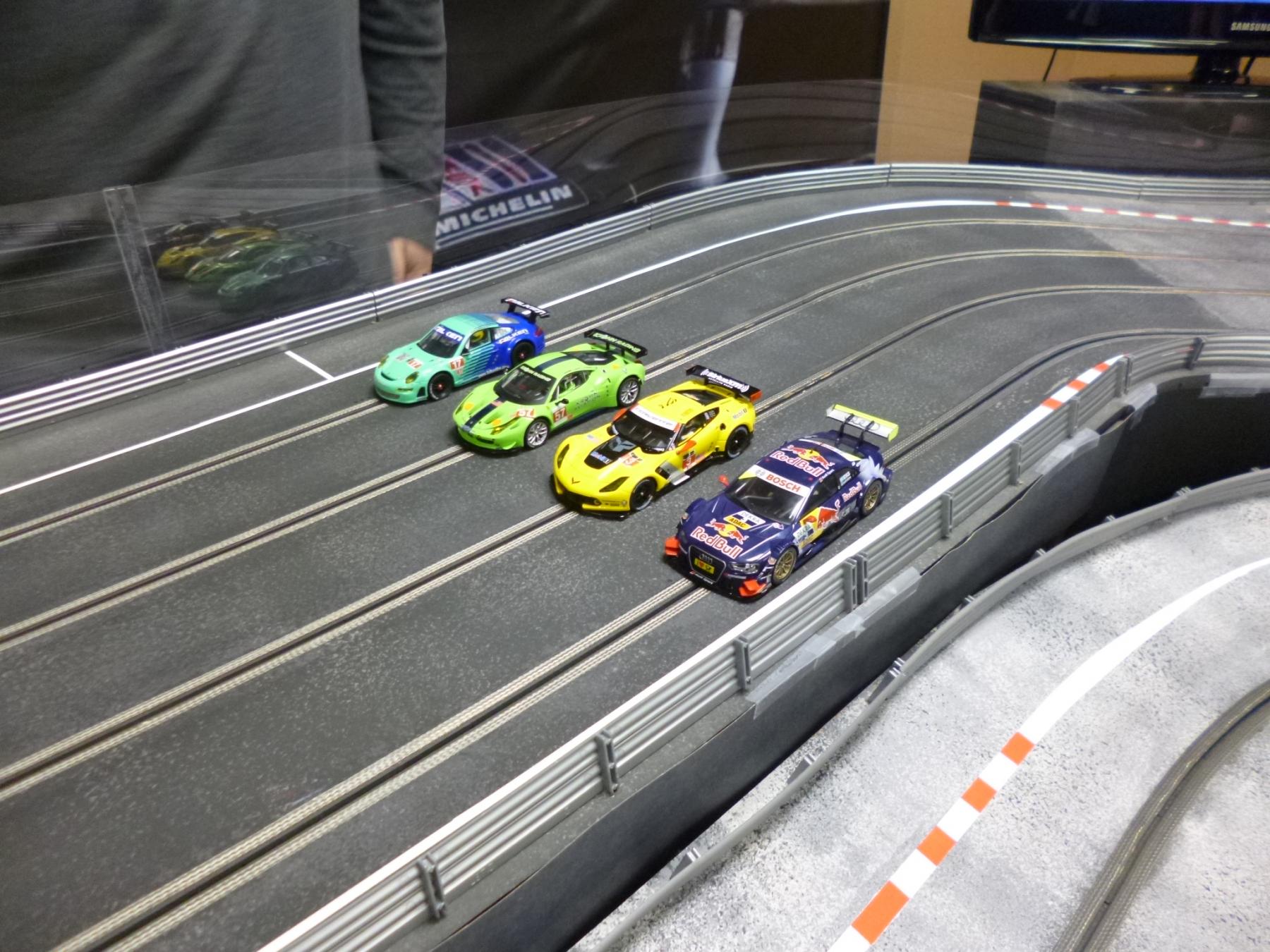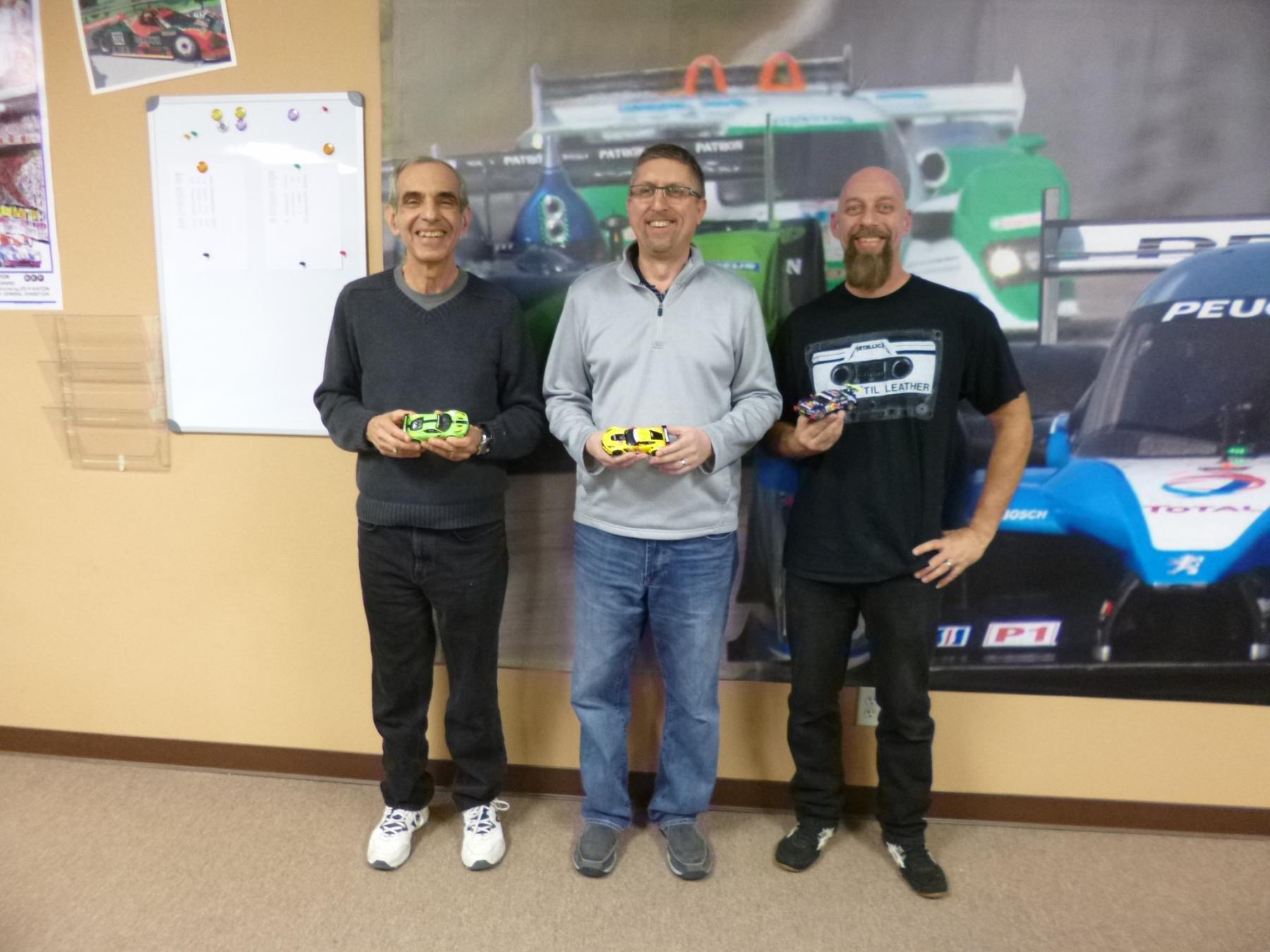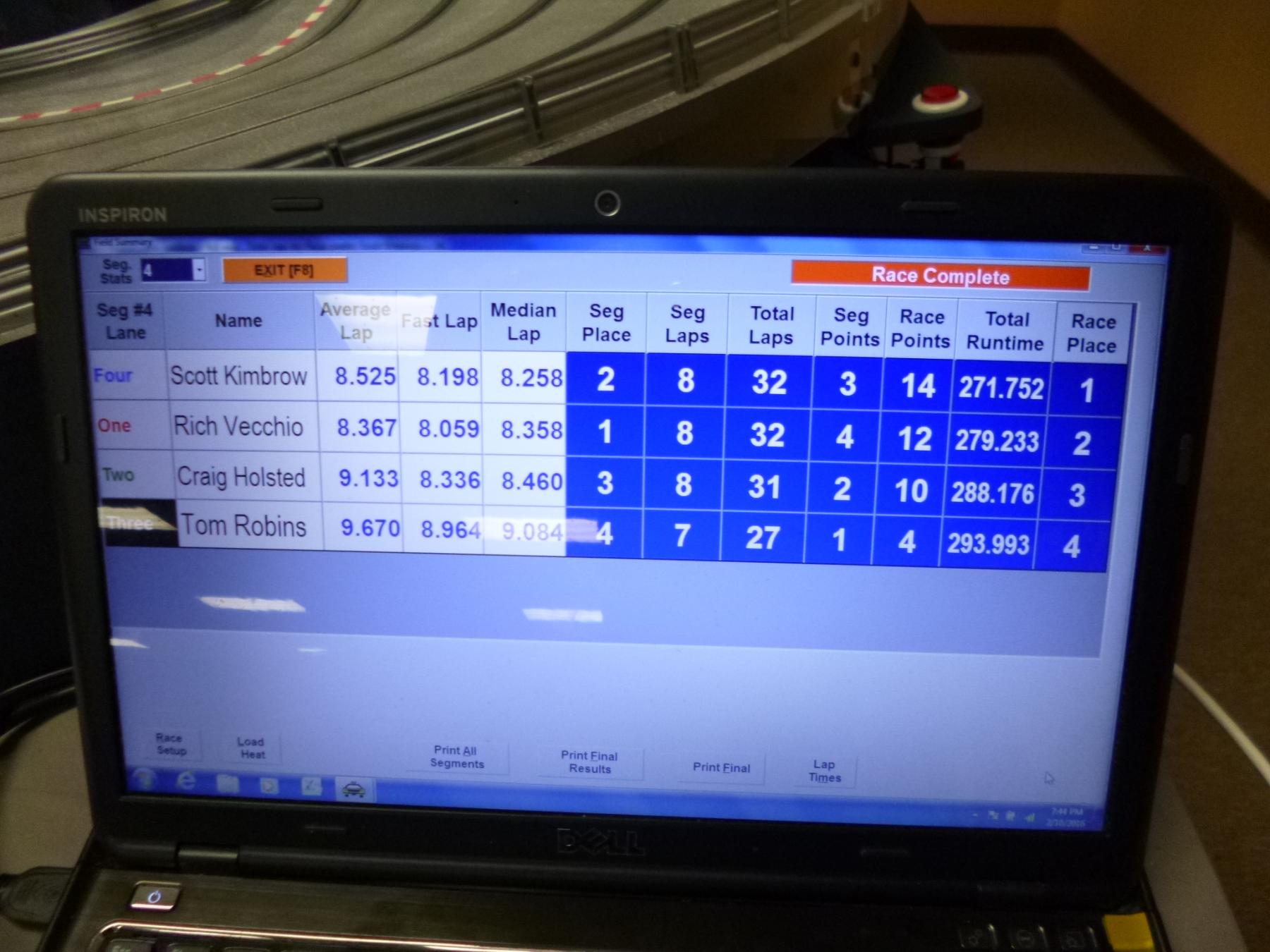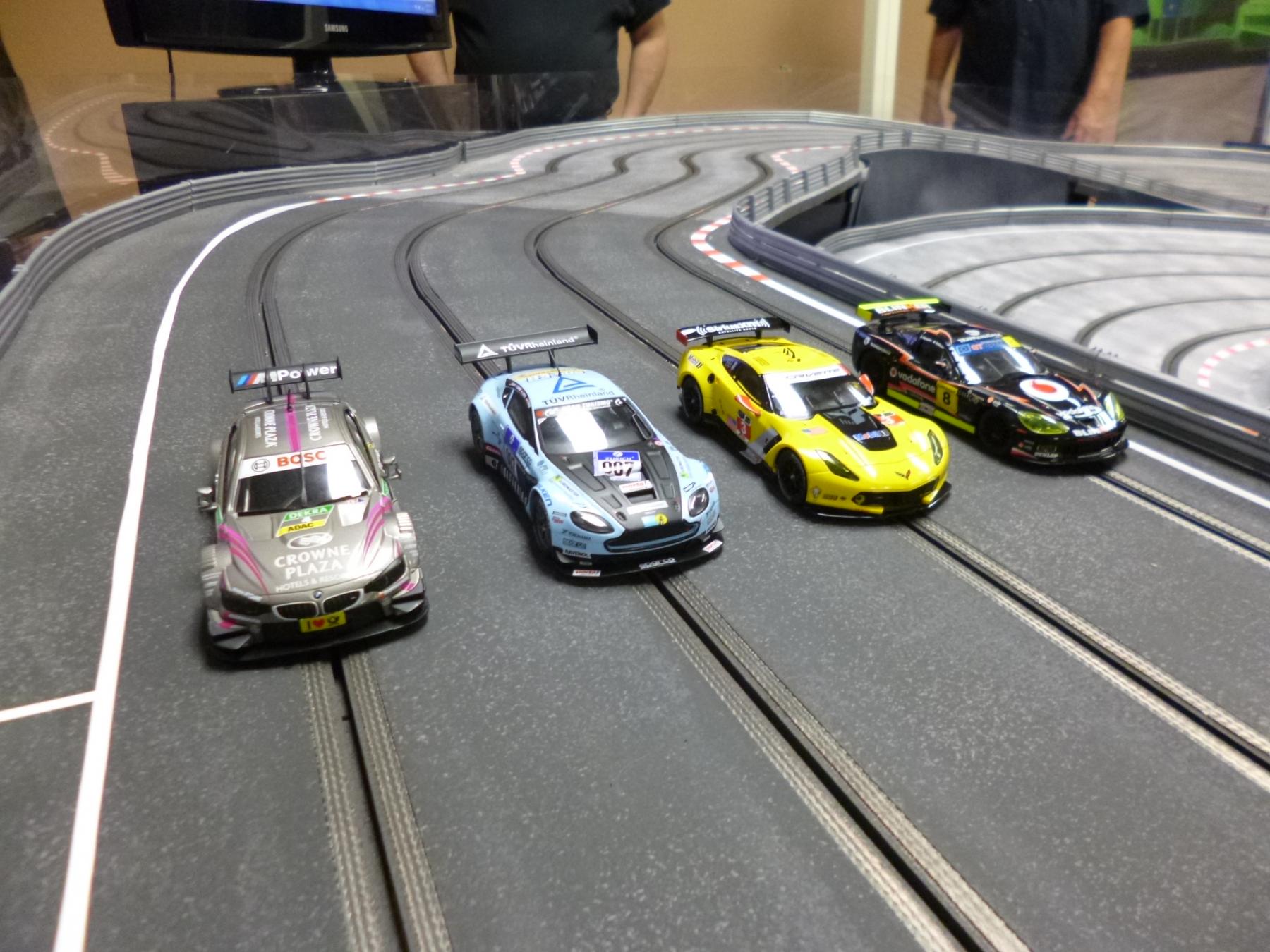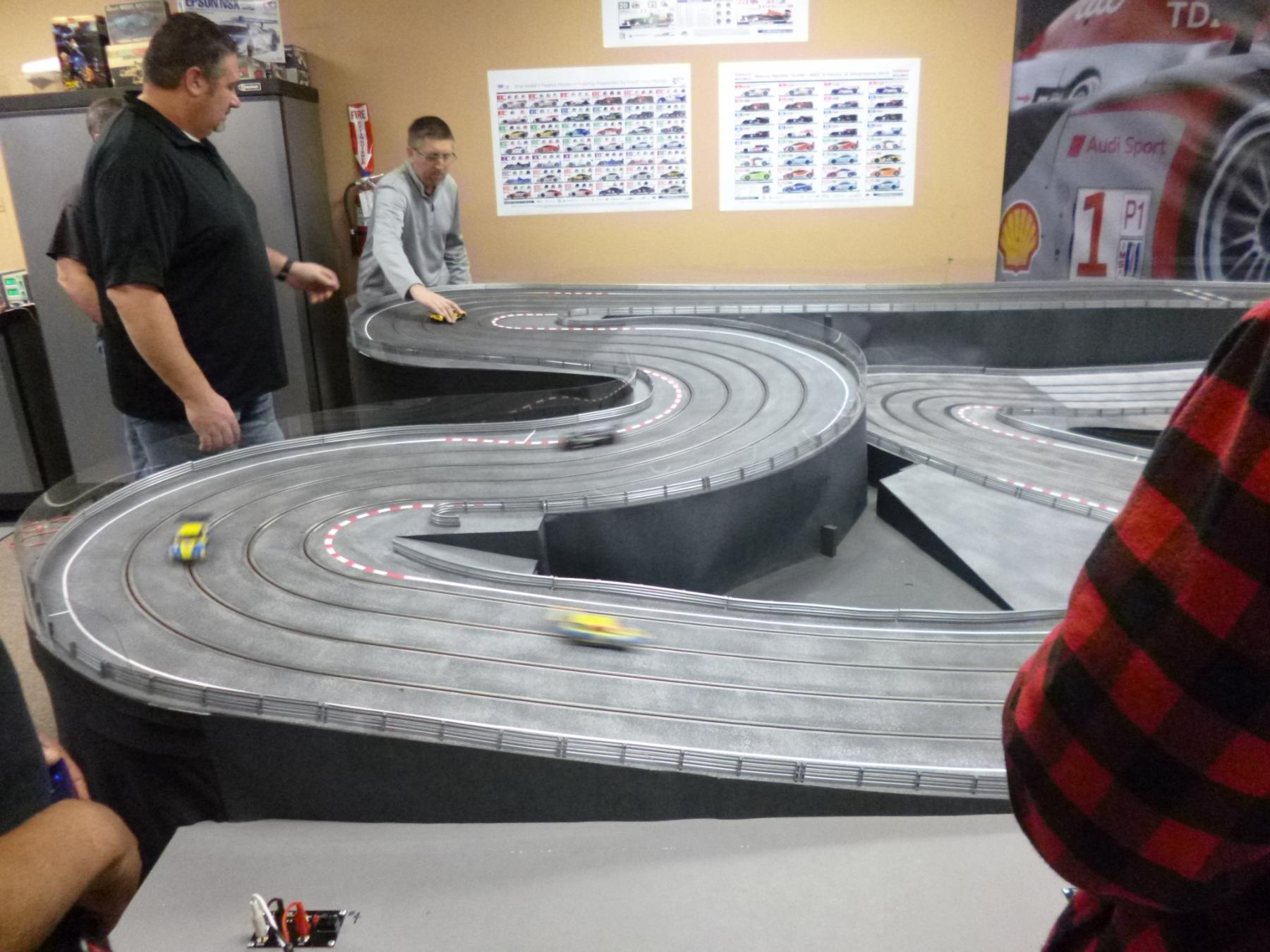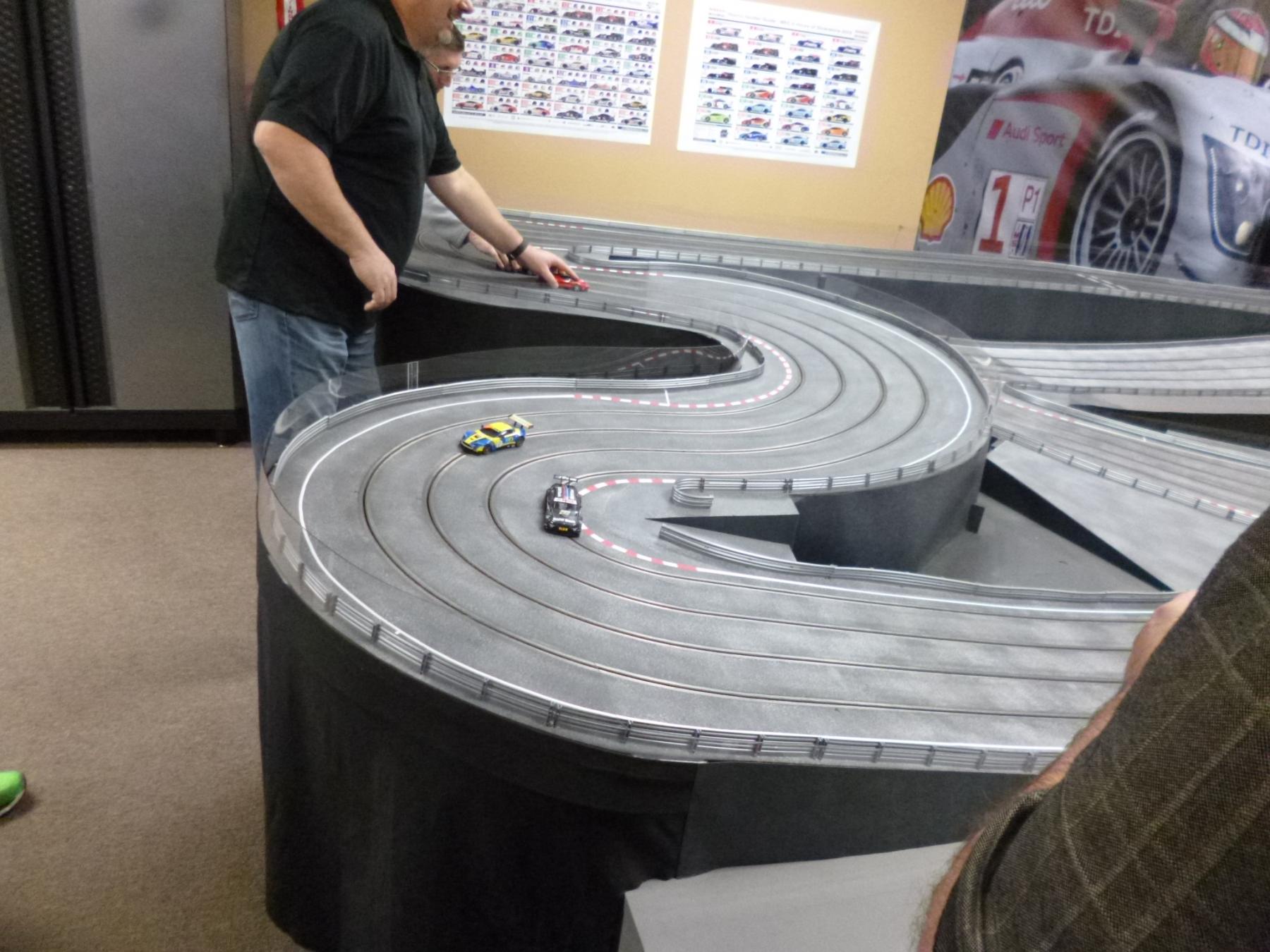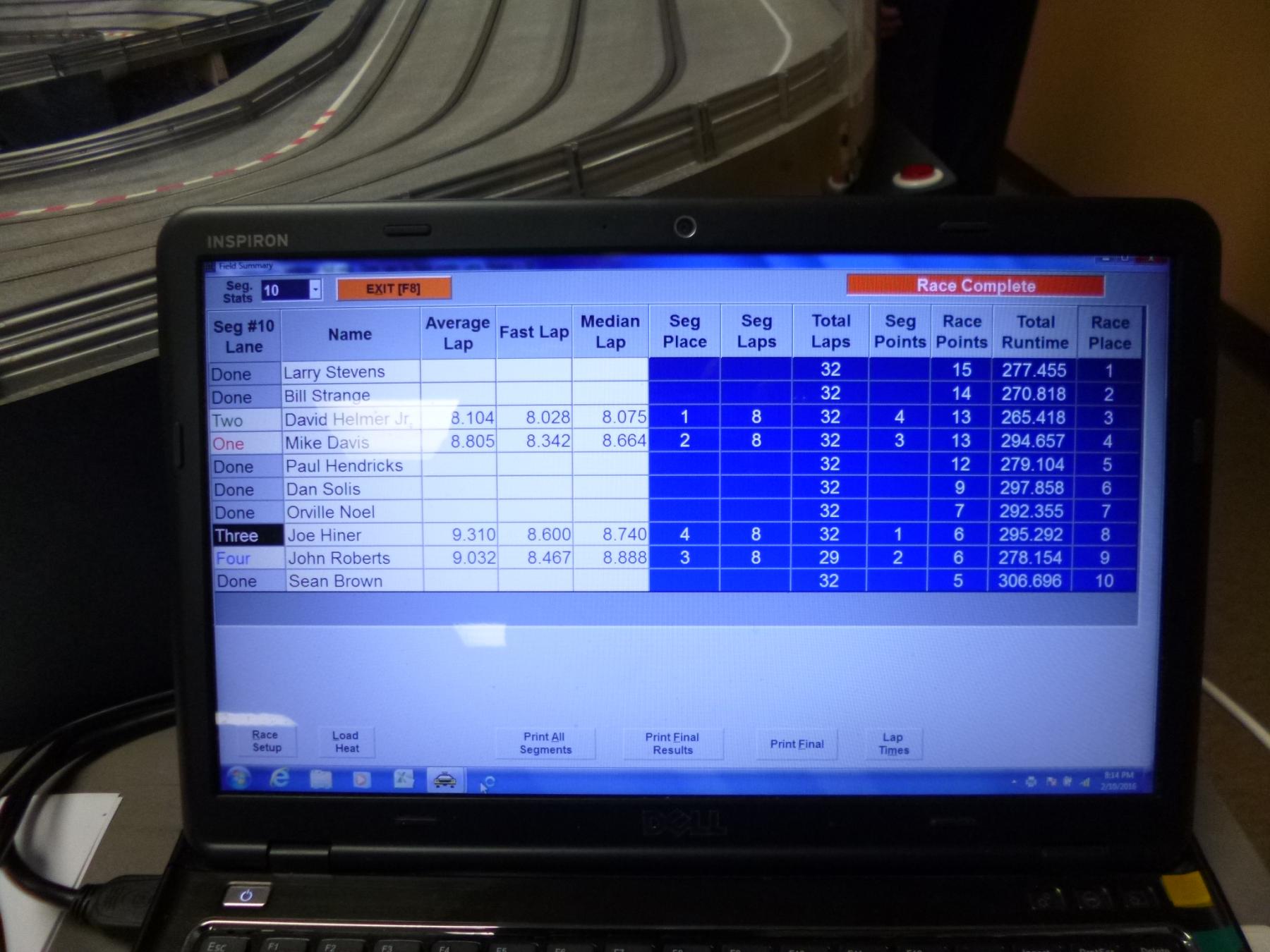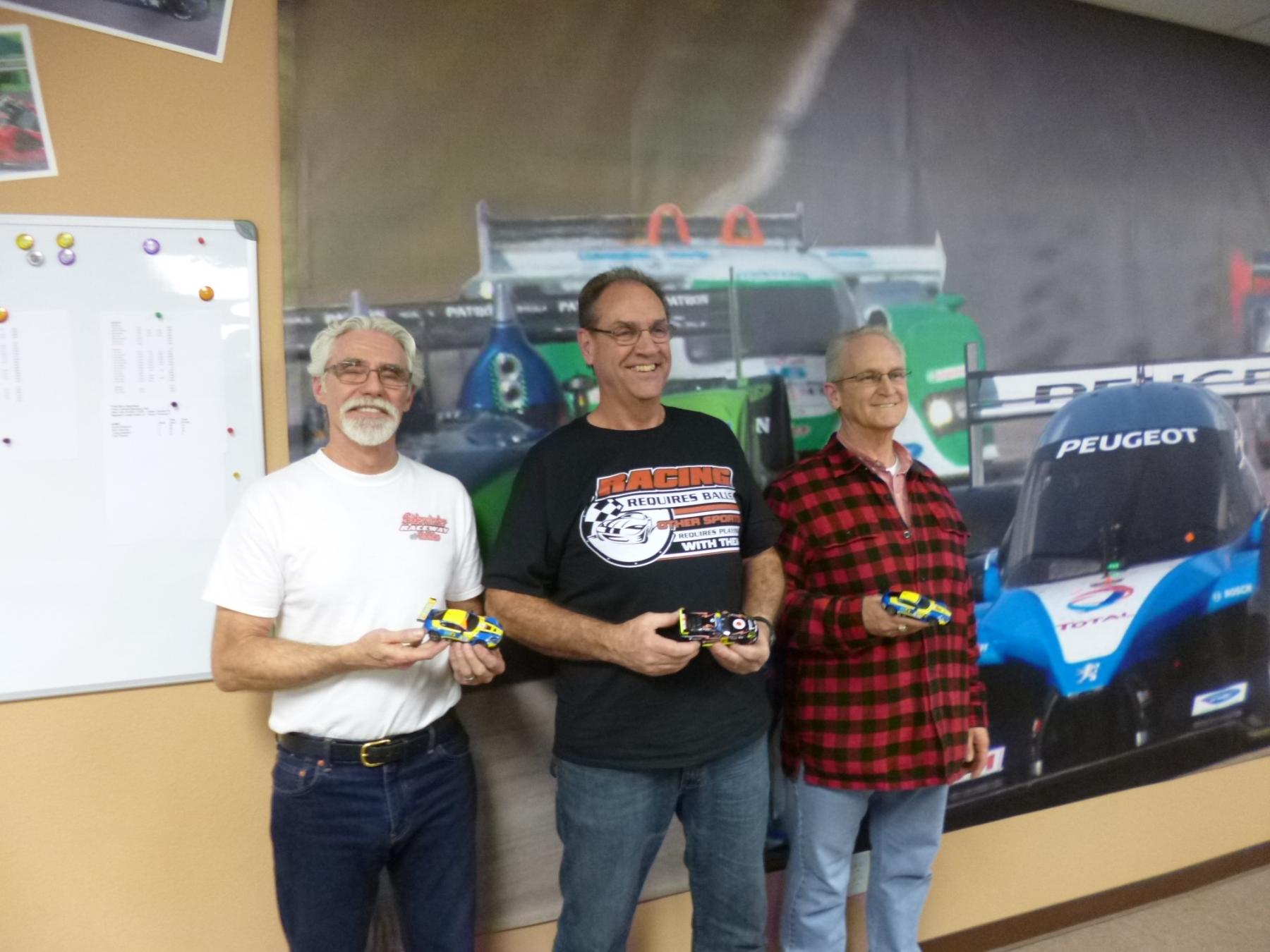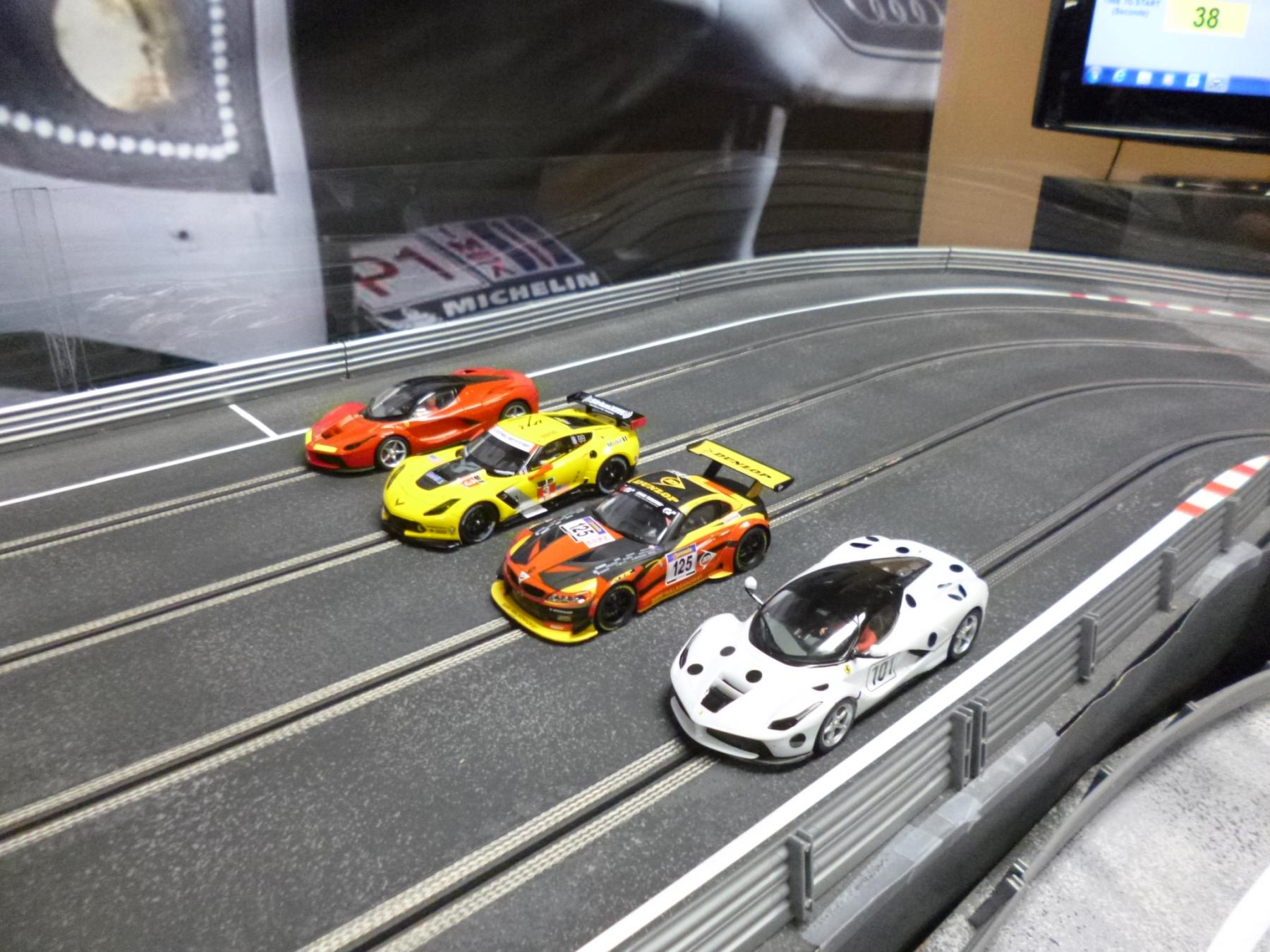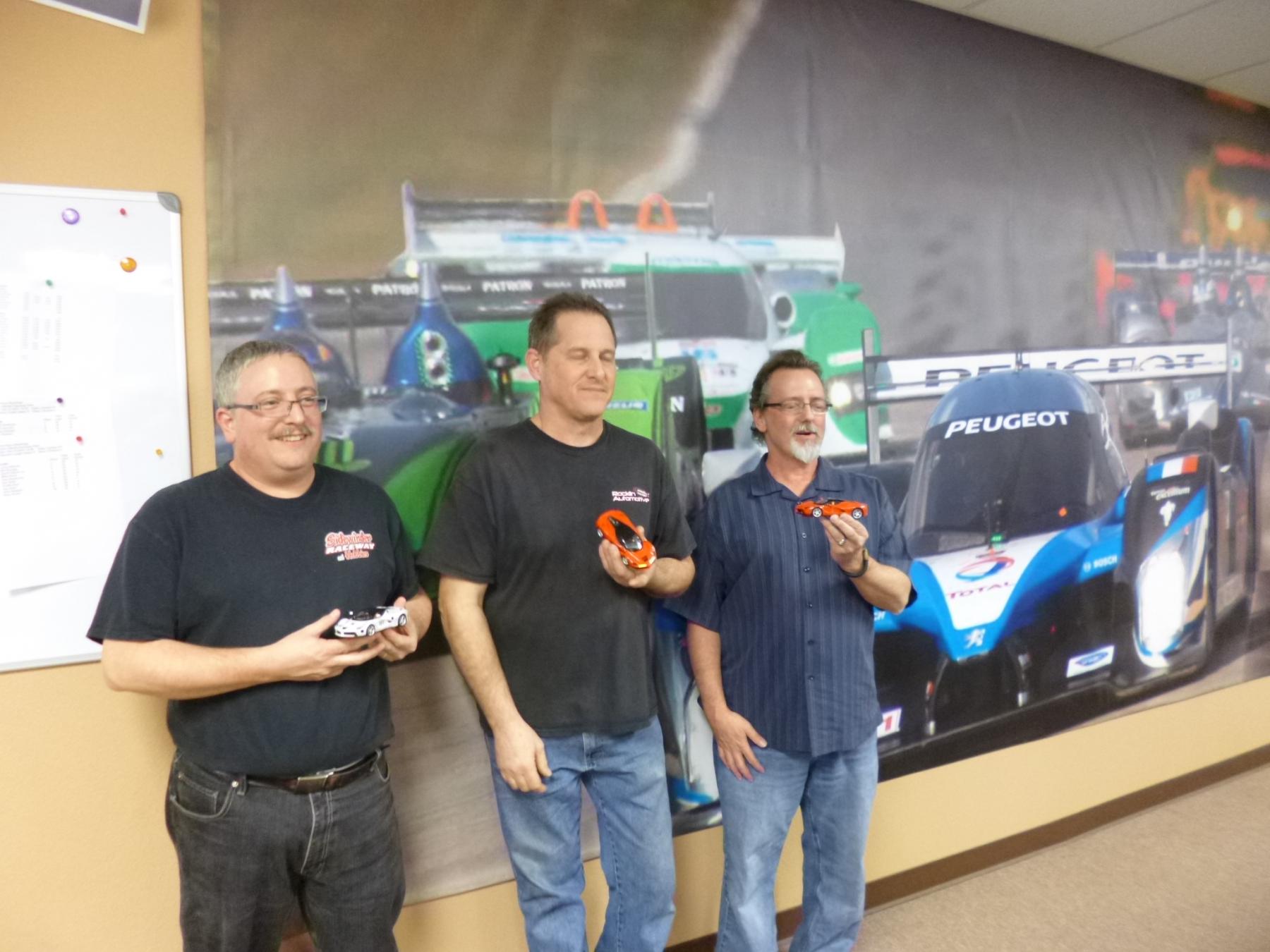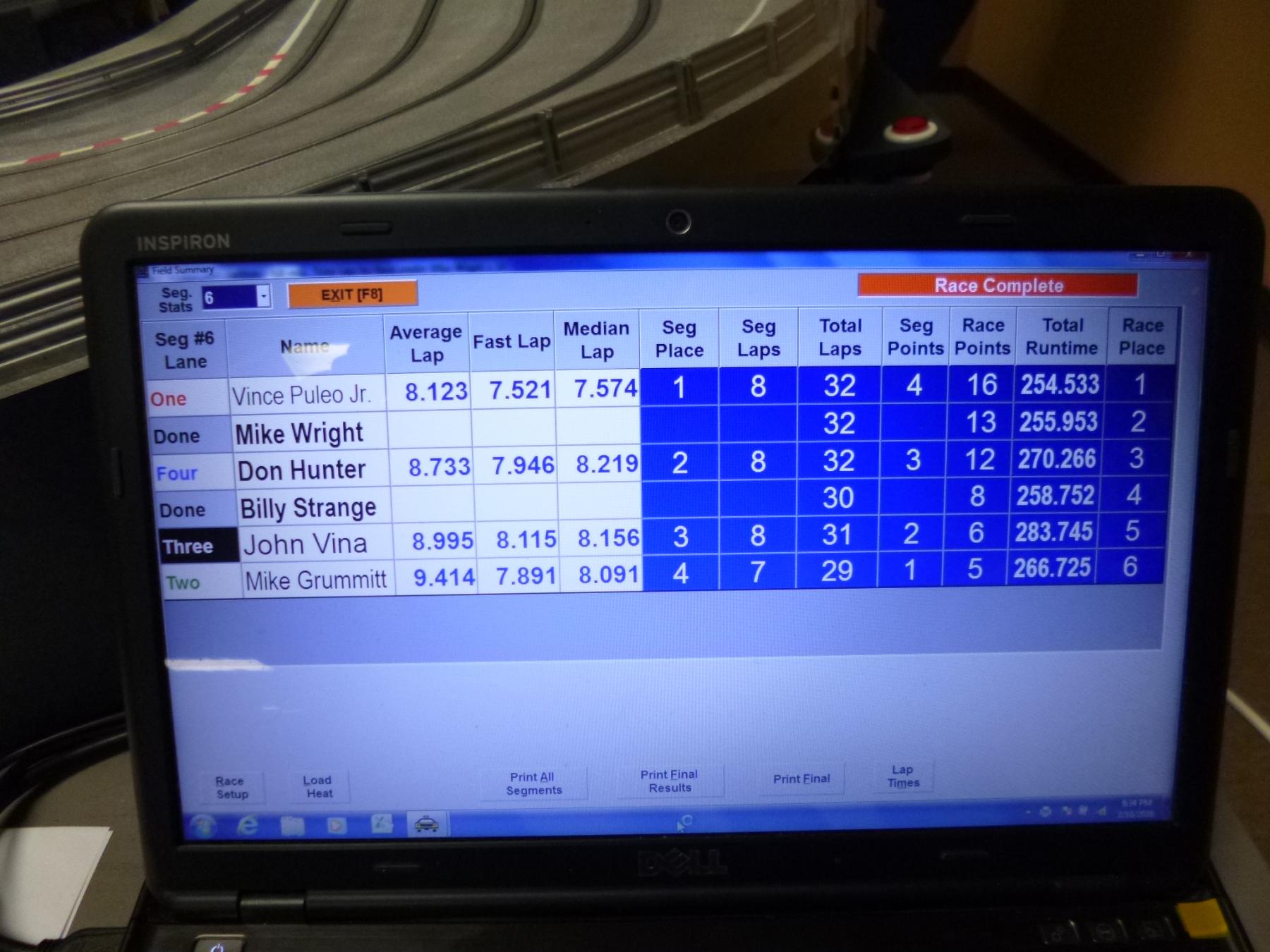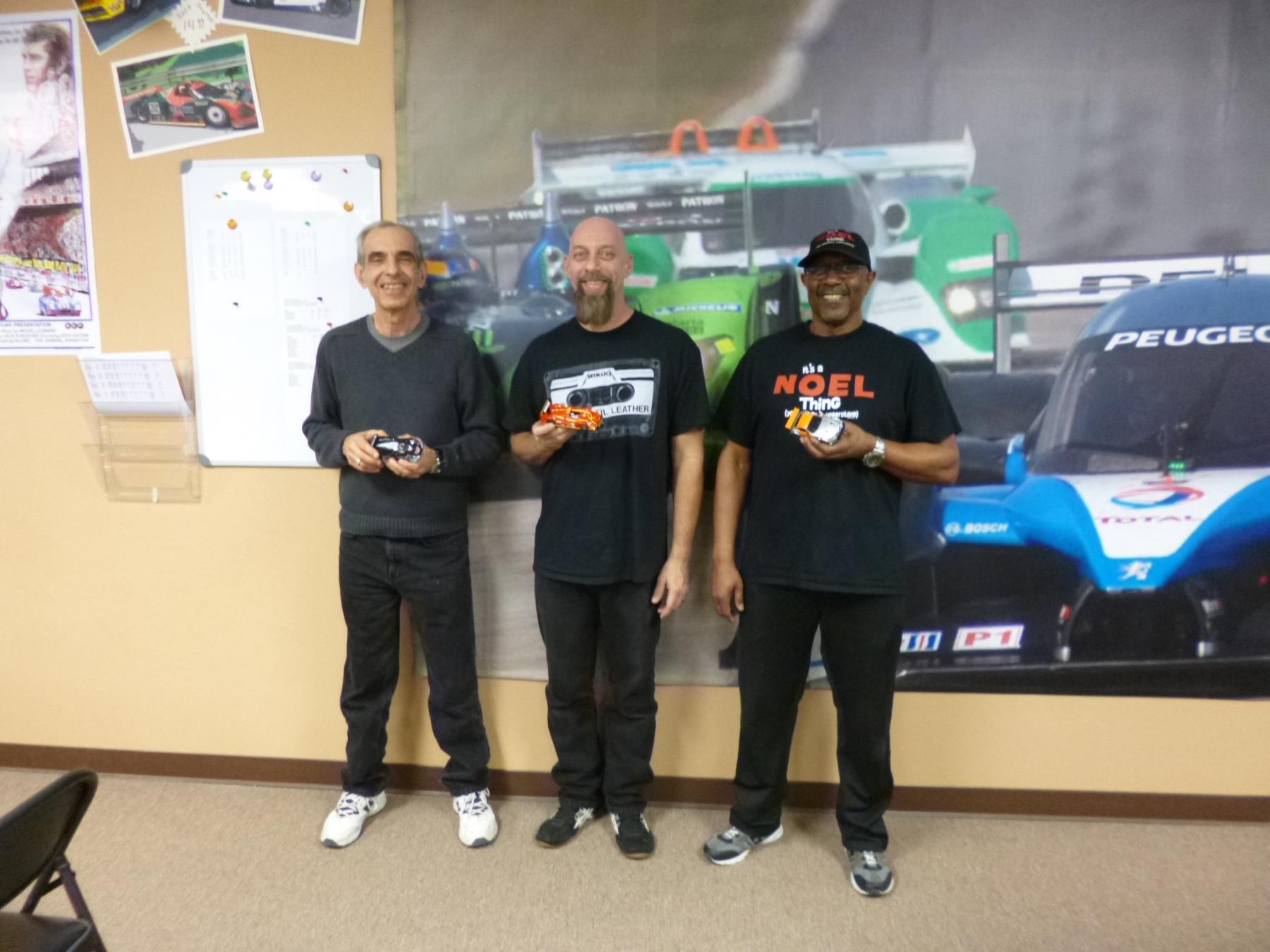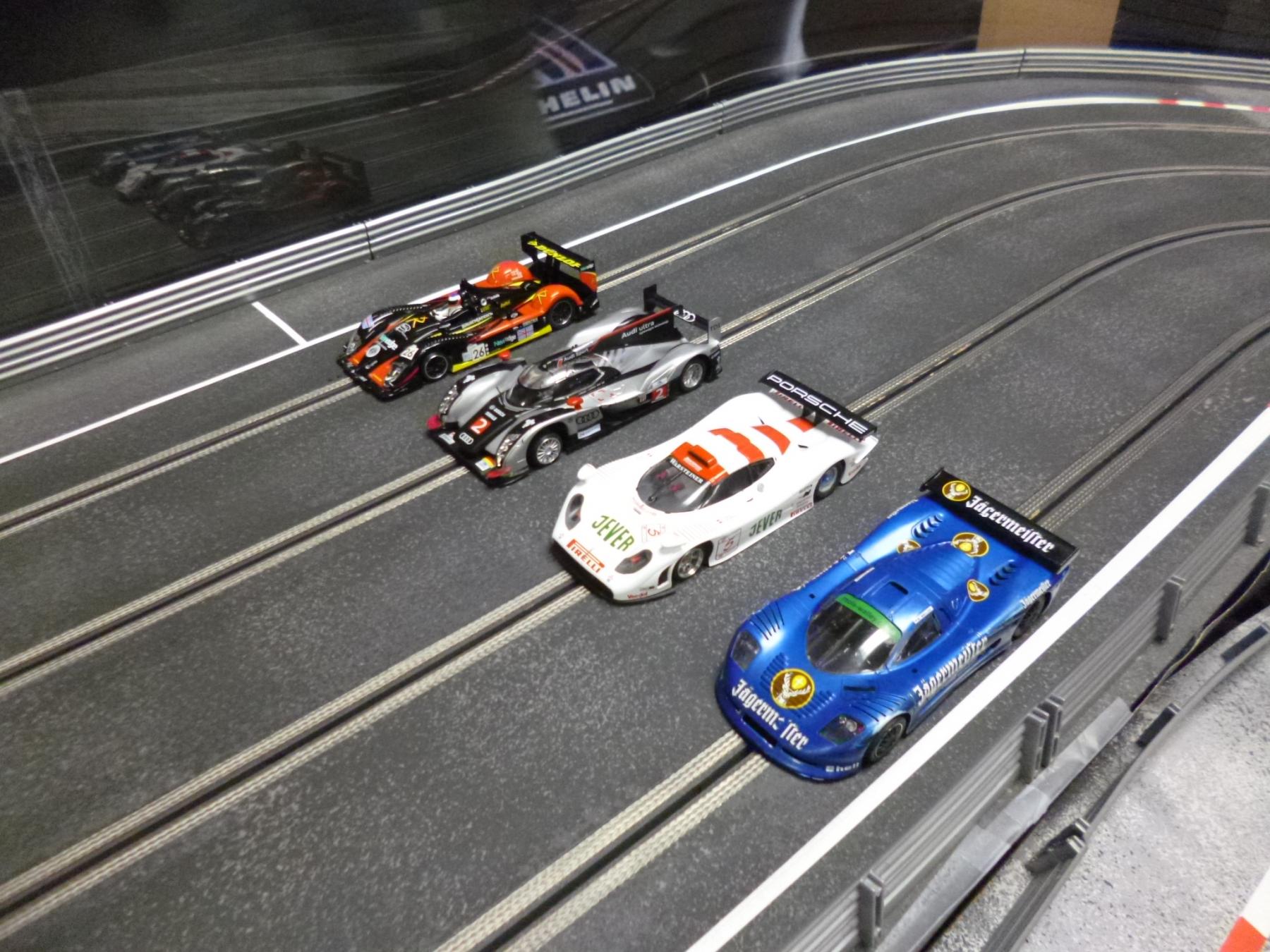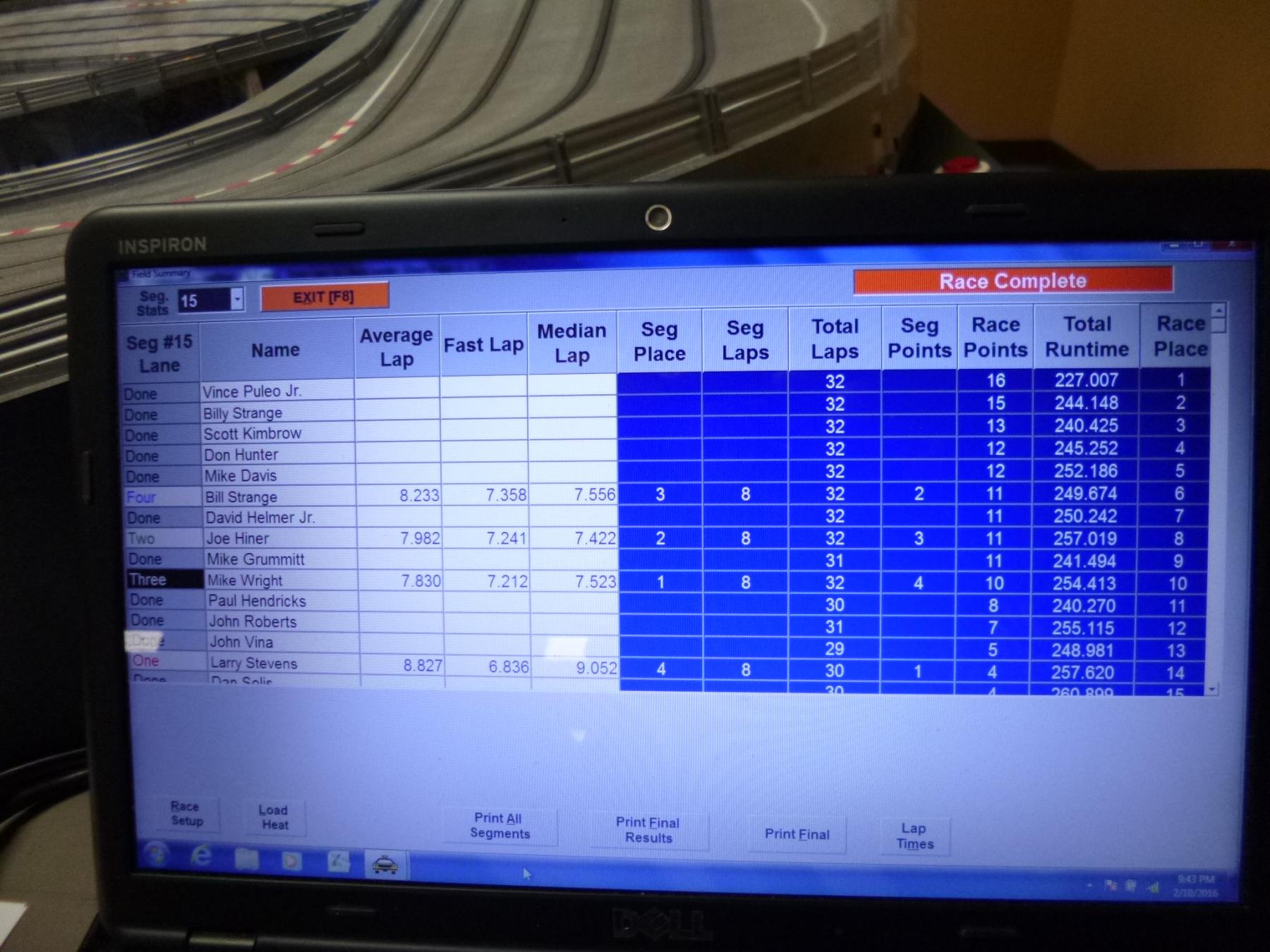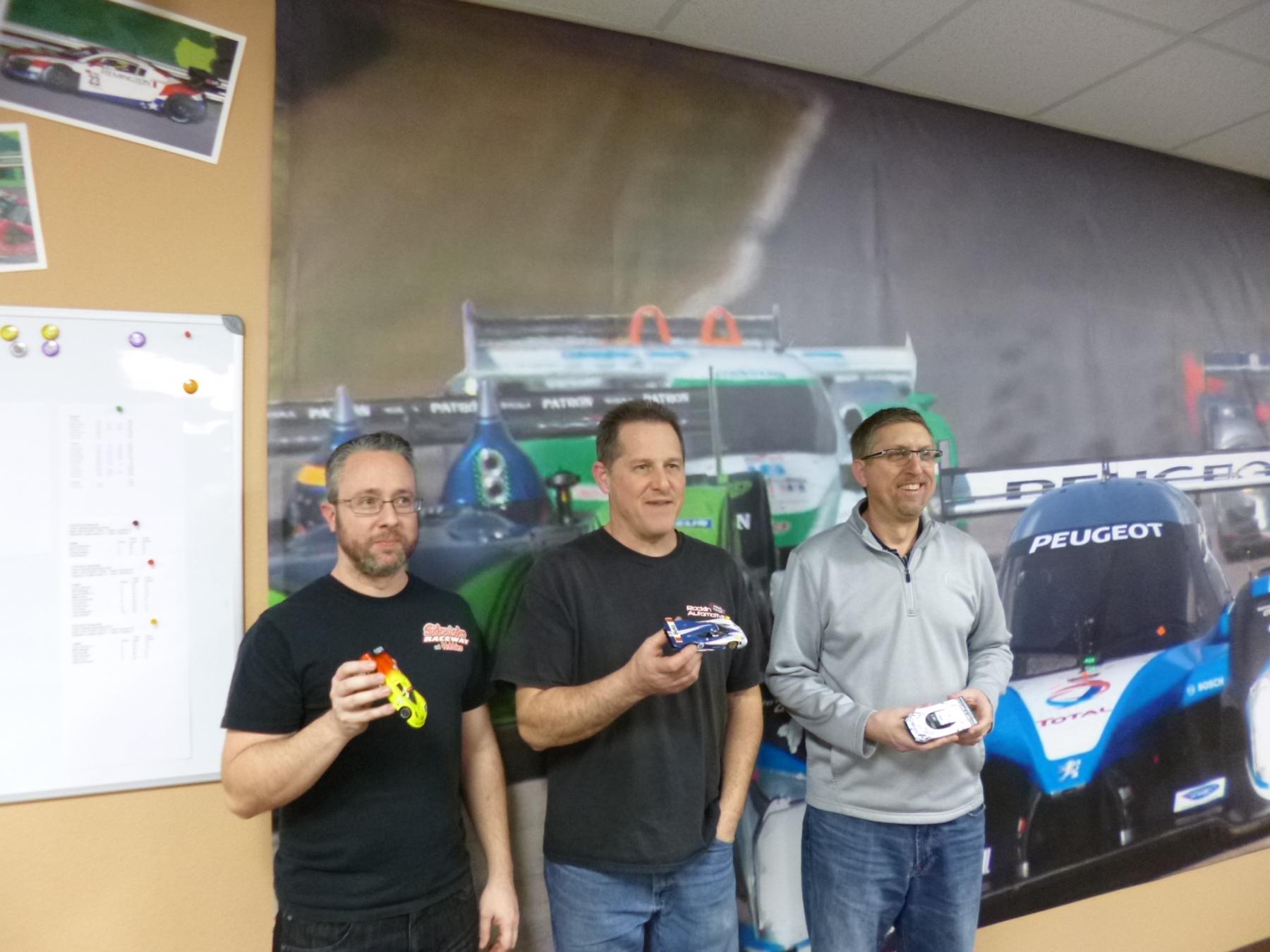As I swung open the door to enter Sidewinder Raceway and Hobbies, I felt like I had emerged from a time machine. I immediately turned into that car crazy young boy I once was; one that grew up in the 60s when cars were king and model car racing was at its pinnacle. Ah, but something was different. The cars were smaller and more detailed. The tracks were more compact but included realistic scenery and buildings. The walls were adorned by custom wall hangings depicting modern racing machines. This was truly the Twilight Zone and only the beginning. The fun factor of Sidewinder Raceway is off the charts. Imagine proprietors that are truly invested in the business. Imagine a place where competitors freely share speed secrets (well most of them anyway). Imagine a place where a car nut can talk about the good old days (or modern times) of the Trans-Am, Can-Am, Group C, GT1, favorite drivers and teams or even the history of model car racing. Imagine a place where folks of all stripes can come and compete in a friendly and clean environment on a regular basis. Here it is folks; Sidewinder Raceway, potentially a new paradigm for an old hobby. Even though the several images below give the reader a flavor for the facility, the images cannot capture the true ambiance of Sidewinder. For that one must experience Sidewinder firsthand.
Just the Facts
Sidewinder Raceway is a family owned and operated business. Bill and his son Billy are the prime movers of the business, however, his wife Jan and their grandson also participate. Summarized below are a few facts and impressions.
- The facility is owned and staffed by the Strange family. It is located in a strip mall in Rancho Cordova (a suburb of Sacramento). Although this is their first commercial venture, they are not at all new to the model car racing hobby.
- The owners are friendly, knowledgeable and foster an environment of camaraderie. Races are seeded with participants of relatively equal ability. Competitive races make for more fun.
- The owners are genuinely interested in growing the hobby. As a consequence they are not in the business of making quick sales. Instead they spend a great deal of time with customers explaining the differences in brands and making sure that the customer is well informed. After the purchase they offer tuning advice and/or help in setting up the cars and even offer driving tips.
- The 2,500 square foot store features two, custom built wooden tracks, well-stocked counters including a wide variety of RTR 1/32 and 1/24 cars and parts as well as static models, scenery, and home sets.
- The tracks were built by the owners and can be characterized by changes in elevation and relatively tight corners. Track scenery includes trees, grass, buildings and figures. The shop is accented by custom wall hangings
- The focus is on 1/32 scale racing, however, 1/24 BRM cars are in the mix.
- The cars, even in so called stock form, are fun to drive and handle well. In modified form they handle great and are quite fast. Bill and Billy are experts at tuning these rides and are always willing to help customers with set up. I was truly amazed that a plastic chassis 1/32 machine could be this good
Yakking with Friends
From time to time I have visit the Sacramento area and each time I make it a point to visit and race at Sidewinder. The owners and some participants who have become more than acquaintances have been kind enough to loan out their competitive machines to me. Believe me, I do appreciate it and am careful to return their equipment in good working order.
On this particular visit, I arrived at Sidewinder around 2 P.M. on Wednesday (race day). I was greeted by father and son owners Bill and Billy Strange. Bill was kind enough to sit a talk about the raceway with me for a bit. I was interested in the economic viability of the business, new programs implemented since my last visit and plans for the future. First, Bill assured me that the business has been operating squarely in the black and that a new three year lease had been signed. In order to encourage newcomers to the hobby, the raceway has implemented $10 Saturdays. All the practice you want, all day for only $10. The raceway has begun selling three D printed plastic chassis. This may spawn a series of new modified classes than handle better than the stock bill of fare. A new track to replace Atlanta Raceway Park is planned for the near future (Most likely this summer). New cars are released frequently and customers are not only racers but collectors buying up new releases with fervor. I saw shelves stacked with 1/32 race cars that I would love to have. As I talked to several customers, they readily admitted to having a hundred or more cars and still collecting.
Prelude to Racing
Races are held every Wednesday evening. The race program rotates through a number of classes of cars over a period of weeks. To make it interesting, some races are held on Atlanta Raceway Park (the larger of the two tracks), while others are held on the Florence Road Circuit. Most races run clockwise on the circuits but just to shake it up some races are run counterclockwise. Races attract from 15-25+ racers for each and every event.
When I arrived there were a few slot heads working on their rides and getting in some practice laps. I recognized some familiar faces and made it a point to sit and chat with all of them. Most had several rides that were ready or near ready for the upcoming race. Michael Wright was kind enough to offer up cars for each of the two upcoming races. He had three for me to choose from for each race. I tried them out and selected a green Ferrari 458 for the Carrera GT race and a black Mosler for the Late Model Sports Car race. Both were competitive rides in their respective classes. Since the race was to be staged on the Florence Road Circuit (FRC) run counterclockwise for this event, I began practicing in earnest on this course. FRC is not nearly as hard a course to learn as Atlanta Raceway Park. In my opinion, there is only one tricky section on the FRC. It is the jog leading onto the main straight (see image below). After a few hours of practice, I began to feel comfortable and I noticed that my lap times were comparable to others that were practicing. Below is an image of these competitive loaners.
Gentlemen, Start Your Engines!
Prior to the race, Billy, the race director, called a drivers meeting to explain the rules for the evening. A total of 20 racers would participate in the event and two classes of cars would be run; Carrera GT and Late Model Sports Cars. Each race would be structured as follows:
Each participant would rotate through the 4 lanes in European rotation.
- Each heat would be eight laps in length
- Each heat would be considered a separate points race. Scoring would be 4,3,2,1 for first through fourth place respectively.
- The race winner would be the driver who amassed the highest number of points.
Carrera GT Race
Billy expertly seeded the contestants into groups. In the Carrera GT class there would be three groups. The first group to run would be dubbed as Division 3. I was assigned to this division along with three others. Lets just say these were not the most competitive cars/drivers in this class. The four competitors in Division 3 would be: Rich Vecchio (green Ferrari 458), Scott Kimbrow (yellow Corvette), Craig Holsted (blue Audi) and Tom Robbins (green/blue Porsche). Kimbrow and Holsted were old hands and I knew they were going to be stiff competition. I did not recall seeing Tom Robbins at any prior races I attended so he was an unknown quantity.
As mentioned above, I felt comfortable driving FRC. In addition, I did not feel that I was greatly disadvantaged to the homies. This was because FRC was run in the counterclockwise direction in only one prior race. The very short races (8 laps lasting about a minute) put a premium on quick starts and consistency. A single off could make the difference between first and fourth. My strategy was to run conservatively and let the chips fall where they may.
An image of the grid for the first heat is shown below. Each heat was exciting and close with several lead changes and battles for the lower positions. After the dust settled, I had amassed 12 points (one first, two seconds and a third). For me the best heat was the last where I managed a first place finish. However, it was not quite enough. In the end, Scott amassed 14 points for first overall with me second (12 points), Craig third (10 points) and Tom fourth (4 points). Details of the finishing order and an image of the podium finishers are shown below. What a fun race. Thanks again to Michael Wright for a very competitive loaner.
Division 2 featured a total of 10 racers. Again, racing was close and competitive. Fast lap times were similar to those turned by Division 3 participants. In the end it was Larry Stevens (15 points), Bill Strange (14 points) and David Helmer (13 points) for first through third respectively. Below are images of the grid, racing action, details of the finishing order and the podium finishers.
Division 1 featured the six hot shoes in the class. Fast lap times were considerably faster than those turned in either Division 2 or 3. The heats were hard fought and exciting. In the end it was Vince Puleo (16 points), Michael Wright (13 points) and Don Hunter (12 points) for first through third respectively. It is interesting to note that all three competitors were driving the La Ferrari. See images below for one of the grids, details of the finishing order and podium finishers.
Late Model Sports Cars
Again, Billy divided the group into divisions. Five of us were assigned to Division 3. The other fifteen ran in a single group Division 1/2. I know that I had a great car for this race. Michael Wright loaned me a screaming Mosler. The car was not only fast but handled great. I felt very comfortable driving it. I recall having an off in the first heat but I ran clean in all others. My stiffest competition was Craig Holsted and Orvil Noel. In the end Craig finished first, I was second and Orvil was third. Sorry no images of grids or detail of finishing order, only an image of the podium finishers is shown below.
The Division 1/2 cars were fun to watch. The quickest rides were about a half second per lap faster than those racing in Division 3. Vince was the victor winning all four of his heat races amassing 16 points. Billy was second with 15 points and Scott Kimbrow was third with 13 points. Below are a few images of the grid, details





